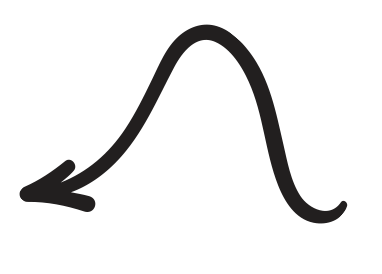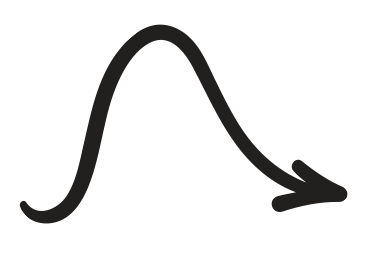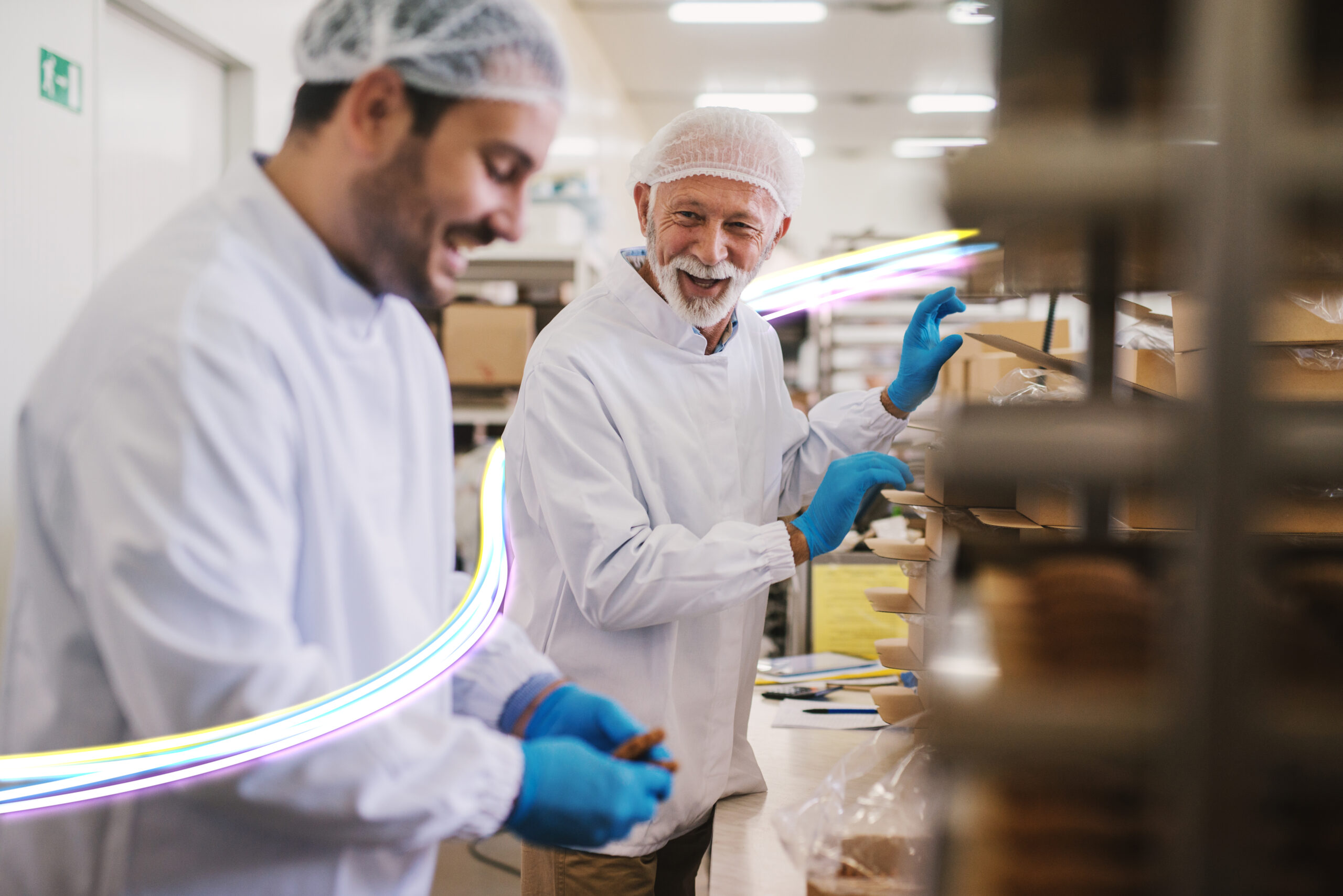
Image recognition using computer vision in the food industry
For the food industry, there are many specific standard vision/image recognition solutions. However, these are often too limited in their capabilities to realise the full added value of a vision system. Therefore, we develop customised computer vision systems to suit a specific production process and application.
The reporting data streams from the computer vision system can be transferred directly to an MES and even an ERP system.
Whereas a sensor often provides insight into a specific dimension of a production process, a camera can instantly span multiple dimensions and provide countless insights. This is the case not only in relation to production, but also in relation to overall business operations.
Here is a quick guide to the topics on this page:
- What is image recognition?
- Applications of image recognition
- How our systems work
- A few client cases
- How do we proceed?
Want to know how you can implement image recognition in your organisation?
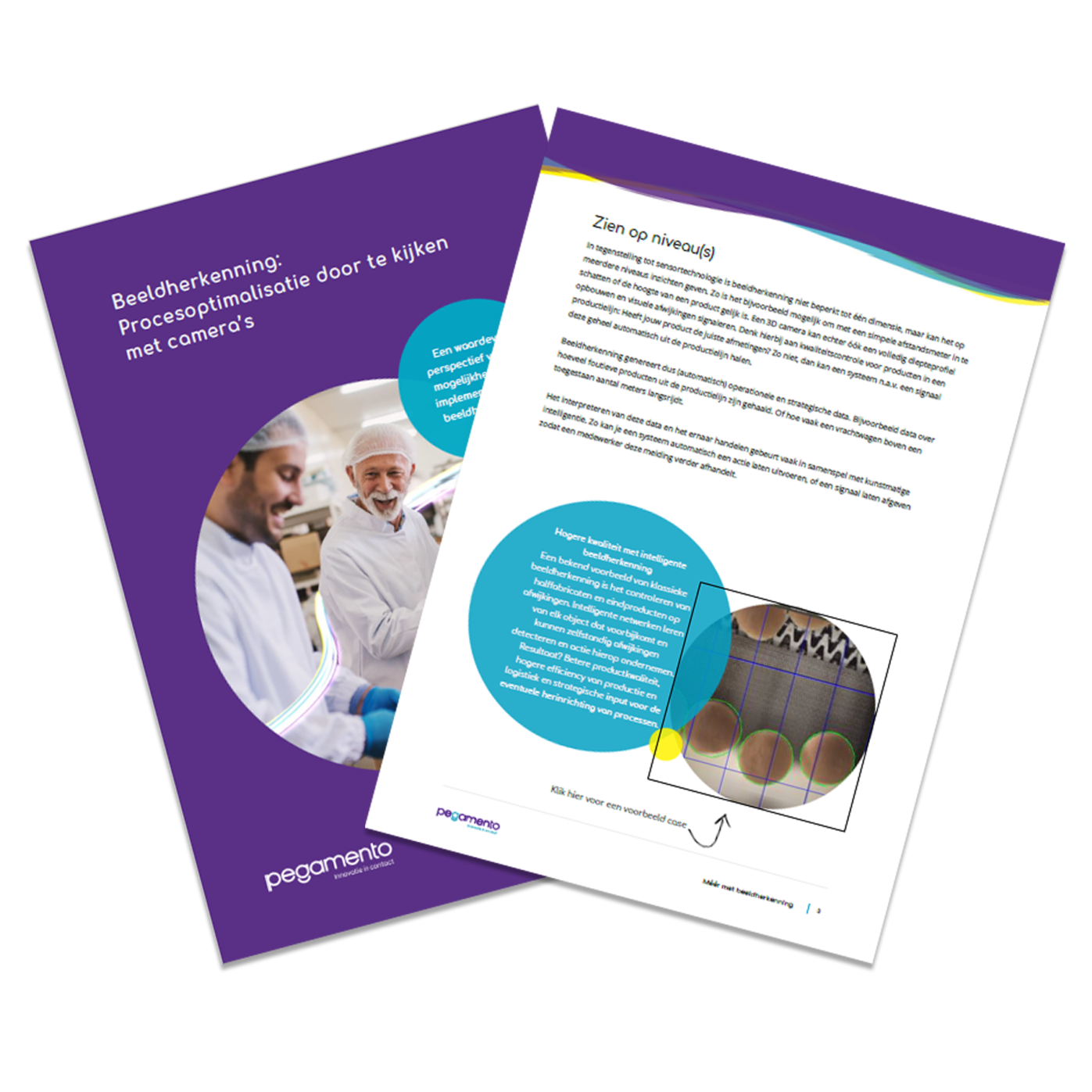
Want to start right away?
Then download your free white paper here. In this white paper, we use a simple checklist to tell you whether image recognition is suitable as an additional application within your organisation.
What is image recognition?
Image recognition and AI
Image recognition is the interpretation of useful data from pixels of photos or videos, for example. Often, specific objects can be detected by using rules to look at their external appearance. But it is also possible to train an Artificial Intelligence network, where you let the software learn from a large number of images, along with an indication of whether they are good or bad examples. Also check out our general topic page on computer vision.
Would you like to work on this type of project? We are still looking for Software Developers AI/Computer Vision.
Image recognition applications
Image recognition and computer vision has many advantages. Below are a number of benefits explained through examples and how the use of cameras and AI (artificial intelligence) can be used.
Image recognition with cameras
In production or logistics processes, it is often important to be able to determine whether certain products or semi-finished products meet the quality requirements. This is one of the most traditional applications of image recognition, although much has changed in this regard in recent years as a result of the rise of Artificial Intelligence.
By using a camera or several cameras at tactical locations in a production or logistics process, it is possible to use vision techniques to determine whether anything abnormal is visible. As a result, potential problems can be prevented at an early stage, or immediate action can be taken.
Machine vision system
It can be challenging to maintain an overview of an industrial process. Often, the starting point and the final production are clear, but an overview of the intermediate steps is missing. How many products have we had to reject and on what grounds? Which product causes the most problems in the process?
Collecting information using a machine vision system provides additional insight into what is really happening. Our systems visualise this data over time to see trends, or they provide a real-time overview of the situation.
Less downtime thanks to cameras.
Downtime can have a huge impact on a production process. Buffers fill up, and manual intervention is often needed to find a short-term solution. Preventing downtime completely is almost impossible, but downtime can often be largely reduced using an image recognition system linked to another process in the production or logistics chain.
By using Artificial Intelligence to recognise products that might cause downtime, our systems can automatically reject these products. By interfacing with a Programmable Logic Controller (PLC), we can engage actuators to remove these products from the regular process, thus reducing downtime.

How do our systems and software work?
By using a camera or several cameras at tactical locations in a production or logistics process, it is possible to use vision techniques to determine whether anything abnormal is visible. As a result, potential problems can be prevented at an early stage, or immediate action can be taken.
Our image recognition/computer vision systems are installed in line and, with a network connection, have the ability to display a web page showing what the system is doing, what data has been collected in the past, and any points of interest that may be present. With the network connection, the system is also able to interface directly with all kinds of MES systems and ERP systems. In this way, our systems directly ensure less downtime, better quality, and more efficient processes, while also providing real-time insight into production in an existing MES system and insight for management and sales in existing ERP systems.
A few client cases
This system is a combination between a thermal imaging camera and a normal HD camera that both look down at the waste stream. The aim of this project was to measure the quantity of usable material in the waste stream. With this information, processes are now configured differently to maximise recycling efficiency.
Because warm paper pulp in the waste stream glows brighter on a thermal imaging camera than plastics, for example, it is possible to measure how efficiently recycling works. With this information, processes are now being adjusted to maximise recycling efficiency.
Sees temperature differences
Shows information about paper fibres to operator
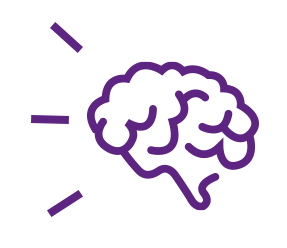
Pegamento has developed a 3D Structured Light Scanner. This 3D scanning prototype is currently in use by a customer. The system has since been further developed and is now capable of detecting, with sub-millimetre precision, objects ranging in size from 1 to 300 mm. Combined with our specifically designed algorithms, this system is also capable of identifying objects. Pegamento is able to do 3D image recognition with structured light, time of flight, or stereoscopic techniques.
Sees objects in 3D with multiple cameras
Acts by comparing these objects with 3D models
Acts by sorting these objects

How do we procees in the exploratory phase?

1. We visit you on site to take measurements
2. We prepare recording software and hardware
3. We work with you to build the recording system on site and store film data
4. We develop proof of concept software in the office and create a report and demo video
5. We present our findings and wrap up by handing everything over
Image recognition within your organisation?
Image recognition can be applied in a wide range of production processes. Wherever anomalies can be visually identified, for instance in relation to dimensions, correct colour, and so on, this technology could be of interest. These are innovative techniques, but they are surprisingly affordable to deploy in production lines.
Could it be a solution for your business? What savings or quality improvements are possible in your processes?
Request an introductory meeting with one of our specialists to find out how image recognition can be applied within your organisation.

